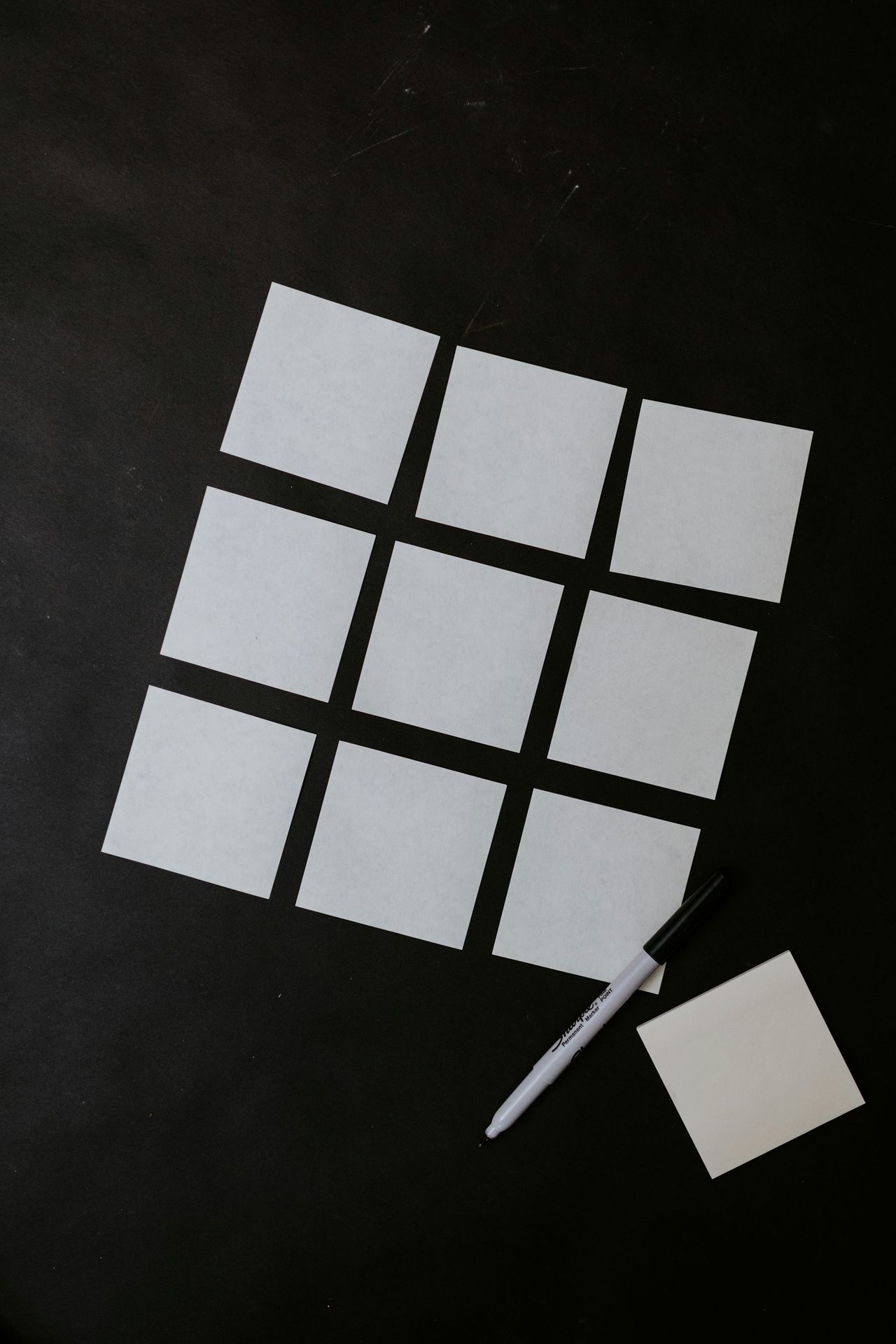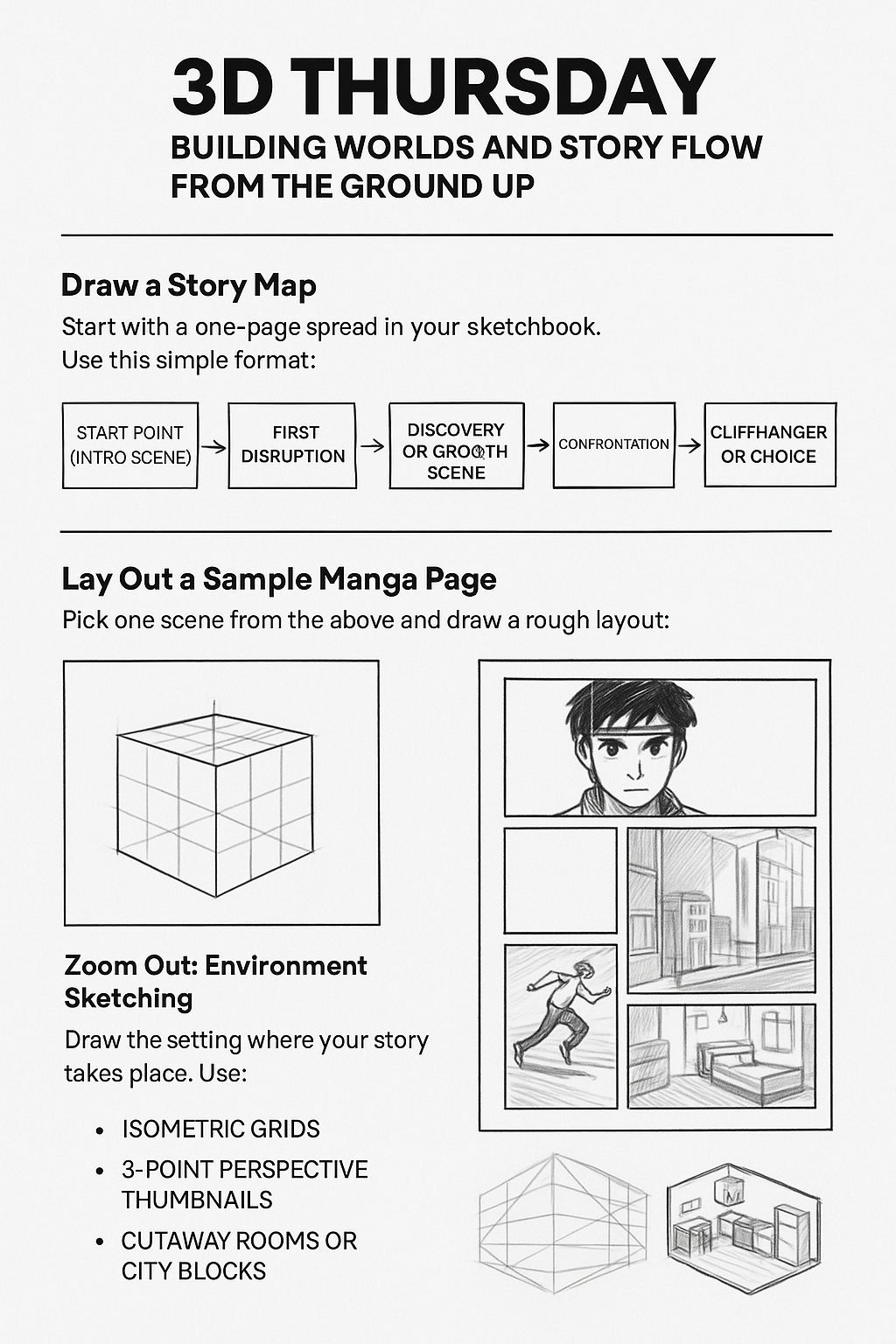For today’s episode of 3D Thursday, continuing the flow from Imagination Sparks (Tuesday) and Character Casting (Wednesday). This one dives into Page 4: Story Structure Sketch and focuses on world-building and manga layout logic through a 3D storytelling lens.

Page 4 of the 8 Pages of Sketchbooking – Story Structure Sketch
Your characters are ready to move—but where are they headed? What kind of world surrounds them? And how does that world shape your story’s rhythm, pacing, and layout?

Welcome to Page 4: Story Structure Sketch—where we start thinking in 3D. Not just the physical dimensions of your characters’ world, but the emotional and narrative scaffolding that holds your manga together.
🧭 Why Story Structure Feels 3D
Imagine your manga like a stage set. The characters you cast are actors. But without a world to explore, stakes to overcome, and a sequence of events that breathe, they’re just standing in the void.
To sketch a solid structure, you must:
- Think in space (where things happen)
- Think in sequence (when things happen)
- Think in scale (how much time or page real estate each moment deserves)
It’s not just about plot points—it’s about flow.
🛠️ How-To: Begin Your Story Structure Sketch

1. Draw a Story Map
Start with a one-page spread in your sketchbook. Use this simple format:
- Start Point (Intro Scene) – How do we meet your protagonist?
- First Disruption – What happens that changes their status quo?
- Discovery or Growth Scene
- Confrontation
- Cliffhanger or Choice
Keep it visual. Use arrows. Add tiny thumbnails if it helps.
Pro Tip: Think of this map like an architectural plan—you’re drafting the layout of an emotional journey.
2. Lay Out a Sample Manga Page
Pick one scene from the above and draw a rough layout:
- Panel shapes and flow
- Character placement
- Backgrounds and spatial orientation
Remember: the shape of your panels can control the emotion and speed of your scene.

Image care or Concepts App. An amazing app providing sketching tools for multiple design industries! It’s also available on PC as well as Apple platforms.
3. Zoom Out: Environment Sketching
Draw the setting where your story takes place. Use:
- Isometric grids
- 3-point perspective thumbnails
- Cutaway rooms or city blocks
You’re not just setting a stage—you’re making a world your readers can walk through.
🎯 3D Application: What It Teaches You
- Scene Weight: Where do you want your reader to slow down? Speed up?
- Panel Dynamics: Can the layout echo your character’s emotional state?
- World Depth: How does your environment interact with character arcs?
Sketching structure isn’t just planning—it’s discovering the inner rhythm of your manga.
🔄 Bonus Challenge: Snap to Scale
Choose one environment (a bedroom, a dojo, a city intersection) and draw it in 3 different ways:
- Bird’s-eye view (for layout and movement)
- Over-the-shoulder view (for immersive dialogue)
- Close-up of one emotional detail (a cracked photo frame, a scuffed shoe, a silent symbol)
This gives you the ability to cinematically move the reader through space, tone, and emotional weight.
Coming Up Next: Figurative Friday
Tomorrow we climb into Page 5: Layout Lab, where we refine how to present our characters in motion across a sequence of panels. We’ll explore how figure drawing, gesture, and emotional timing support our visual storytelling.
Want to share your story map or layout? Tag @SketchBookArtists and use #8PagesOfManga
Let’s keep this world-building rolling—panel by panel, page by page.